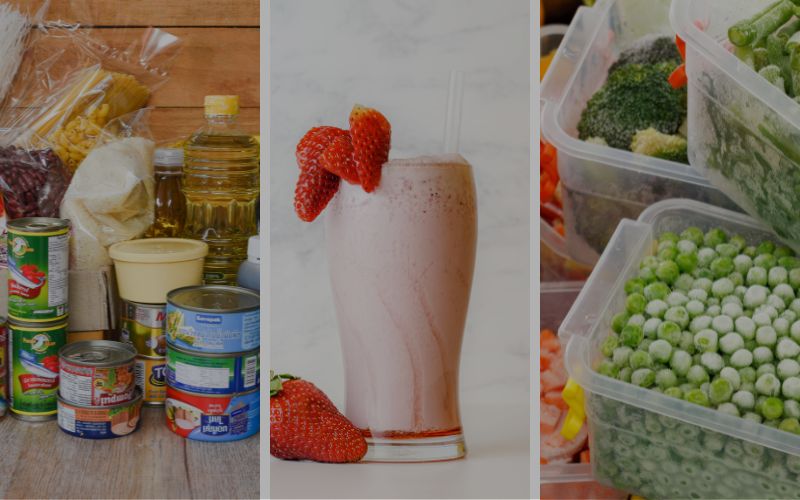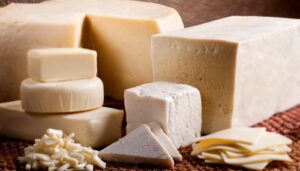In today’s world, it’s really important to know how to store food in different ways. This affects how safe and good the food is to eat, as well as how healthy it is for us. There are three main types of food storage: ambient (which means at room temperature), chilled (which means in the fridge), and frozen (which means in the freezer). Each type has its own special things you need to know to keep the food fresh and tasty. Learning about these categories helps us pick the right foods and stop wasting food, making our meals even better!
Explanation of What Ambient Foods Are
Ambient foods are a category of food products that can be safely stored and consumed at room temperature, without requiring refrigeration or freezing. Unlike perishable items like dairy or fresh produce, which need to be kept cold to prevent spoilage, ambient foods have the unique ability to maintain their quality and safety even when stored in a pantry or on a shelf without the need for extra cold or freezing temperatures.
Characteristics of Ambient Foods
Room Temperature Storage: The most defining characteristic of ambient foods is their capacity to be stored at room temperature, usually between 20-25°C (68-77°F). This means that you don’t need to use a refrigerator or freezer to preserve their freshness.
Longer Shelf Life: Ambient foods tend to have a longer shelf life compared to perishable items. This is due to their lower moisture content and minimal processing, which helps to prevent the growth of bacteria and other microorganisms that cause spoilage.
Minimal Processing: These foods usually undergo minimal processing compared to their chilled or frozen counterparts. While some processing, like canning or drying, might be involved, it’s not as intensive as the processing required for frozen or chilled foods.
Examples of Ambient Foods
Canned Goods: Canned foods, such as soups, vegetables, fruits, and beans, are classic examples of ambient foods. The canning process involves sealing the food in airtight containers, effectively preserving it without refrigeration.
Dry Pasta and Rice: These staple items are often found in households around the world. Their low moisture content prevents bacterial growth, allowing them to be stored safely at room temperature for extended periods.
Dried Fruits: Drying removes the water content from fruits, inhibiting the growth of microorganisms. This preservation method results in a tasty and nutritious snack that doesn’t require refrigeration.
Baked Goods: Many types of bread, crackers, and cookies fall into the ambient foods category. These items usually have a lower water content, allowing them to be stored at room temperature without spoiling quickly.
Cereals and Grains: Breakfast cereals, oats, and other grains are examples of ambient foods. They are often packaged in airtight containers to maintain their freshness.
Canned Meats and Fish: Alongside canned vegetables and fruits, meats and fish can also be preserved in cans. This allows for safe room-temperature storage without compromising taste and safety.
Shelf-Stable Sauces and Condiments: Many sauces, like ketchup, mustard, and soy sauce, are formulated to be stable at room temperature due to their processing and ingredient composition.
Explanation of Chilled Foods and Their Storage Requirements
Chilled foods are a category of perishable items that need to be stored at low temperatures, typically above freezing point but below room temperature, to maintain their freshness and safety. These foods are more delicate than ambient foods and require specific temperature conditions for storage. Unlike ambient foods, chilled foods have a shorter shelf life and must be consumed within a certain time frame to avoid spoilage.
Characteristics of Chilled Foods
Storage at Low Temperatures: Chilled foods are stored at temperatures ranging from around 0°C to 8°C (32°F to 46°F). This range slows down the growth of harmful microorganisms, extending the shelf life of these foods compared to room temperature storage.
Perishable Nature: Due to their higher moisture content and the absence of preservatives common in ambient foods, chilled foods are more prone to spoilage. Bacteria, yeasts, and moulds can multiply more quickly at these temperatures, which is why these foods need to be consumed relatively quickly.
Moderate Processing: Chilled foods often undergo moderate processing to maintain their quality and safety. This might include pasteurization, vacuum packaging, or controlled atmosphere packaging to minimize the growth of spoilage organisms and prolong shelf life.
Examples of Chilled Foods
Dairy Products: Milk, yogurt, cheese, and butter fall under this category. These items are highly perishable due to their high moisture content and require cold storage to prevent bacterial growth.
Fresh Meats: Raw meat, poultry, and seafood are examples of chilled foods. They are kept at low temperatures to prevent the growth of harmful bacteria, ensuring they remain safe for consumption.
Pre-Made Salads: Salads that contain ingredients like leafy greens, vegetables, and dressings are considered chilled foods. These require refrigeration to keep them crisp and prevent the growth of bacteria.
Insight into the Supply Chain and Temperature Control for Transporting Chilled Goods
The supply chain for chilled foods involves strict temperature control at every stage. From production facilities to distribution centres and finally to grocery stores, temperature-controlled environments are crucial to prevent spoilage and maintain quality. Refrigerated trucks and storage units play a vital role in maintaining the required low temperatures during transportation and storage.
Explanation of Frozen Foods and the Concept of Deep Freezing
Frozen foods are a category of food products that are stored and preserved at sub-zero temperatures, typically below -18°C (0°F), a process known as deep freezing. Deep freezing involves rapidly lowering the temperature of the food to inhibit the growth of microorganisms and enzymatic activity, thereby preserving the quality and safety of the food for a longer period.
Characteristics of Frozen Foods
Storage at Sub-Zero Temperatures: The most distinct feature of frozen foods is their storage at extremely cold temperatures, which significantly slows down the deterioration process. This makes it possible to store foods for extended periods without compromising their quality.
Extensive Processing: Frozen foods often undergo more extensive processing than ambient or chilled foods. This can include blanching (briefly boiling or steaming), par-cooking, or flash freezing to lock in flavor, texture, and nutrients before freezing.
Longer Shelf Life: Due to the deep freezing process, frozen foods have a much longer shelf life compared to ambient and chilled foods. This makes them convenient for consumers who want to stock up on food items.
Examples of Frozen Foods
Frozen Vegetables and Fruits: A variety of fruits and vegetables are frozen at their peak freshness, retaining their nutrients and flavours. These frozen options are a convenient way to enjoy produce even when it’s out of season.
Ready-to-Eat Meals: Frozen meals, including dinners and entrees, are available in many supermarkets. These meals are precooked, frozen, and can be quickly reheated for a convenient and time-saving meal option.
Ice Cream and Frozen Desserts: Frozen foods also encompass sweet treats like ice cream, sorbet, and frozen yogurt. The freezing process helps maintain their creamy texture and prevents the growth of ice crystals.
Highlighting the Technology and Processes Involved in Freezing Foods
Freezing technology involves rapid freezing of food products, which prevents the formation of large ice crystals that can damage cell structures and lead to texture and flavor loss. Blast freezers and other specialized equipment are used in the freezing process to ensure that the food’s quality is preserved.
Key Differences and Considerations
A. Temperature Requirements
Each category demands specific temperatures for safekeeping: room temperature for ambient, cool refrigeration for chilled, and freezing temperatures for frozen foods. These temperatures intricately influence the safety and quality of our meals.
B. Nutritional Aspects
The storage category influences nutritional content. We explore how ambient, chilled, and frozen foods impact the vitamins and minerals we consume. Insights are provided to help maintain nutritional value during storage and preparation.
C. Consumer Choices and Convenience
Various factors shape our preferences for one storage category over another. We delve into these factors and ponder the balance between convenience and nutritional excellence when making food choices.
Read More: The Future of Food Cash and Carry Wholesalers: Embracing Technology and E-commerce
Conclusion
In the intricate tapestry of food choices, the distinctions between ambient, chilled, and frozen foods weave a story of convenience, preservation, and flavor. As we reflect on the unique characteristics of each category, it becomes clear that understanding these differences is not merely a culinary exercise, but a journey towards making informed decisions that resonate beyond the dinner table.
So, let’s challenge ourselves: next time we’re planning a meal, reach for those frozen treasures. Whether it’s a stir-fry of vibrant frozen veggies or a comforting bowl of frozen fruit for a quick dessert, these choices not only honour the environment but also grant us the gift of a diversified diet. Let the freezer become our ally in the quest for better eating habits and a brighter future.







